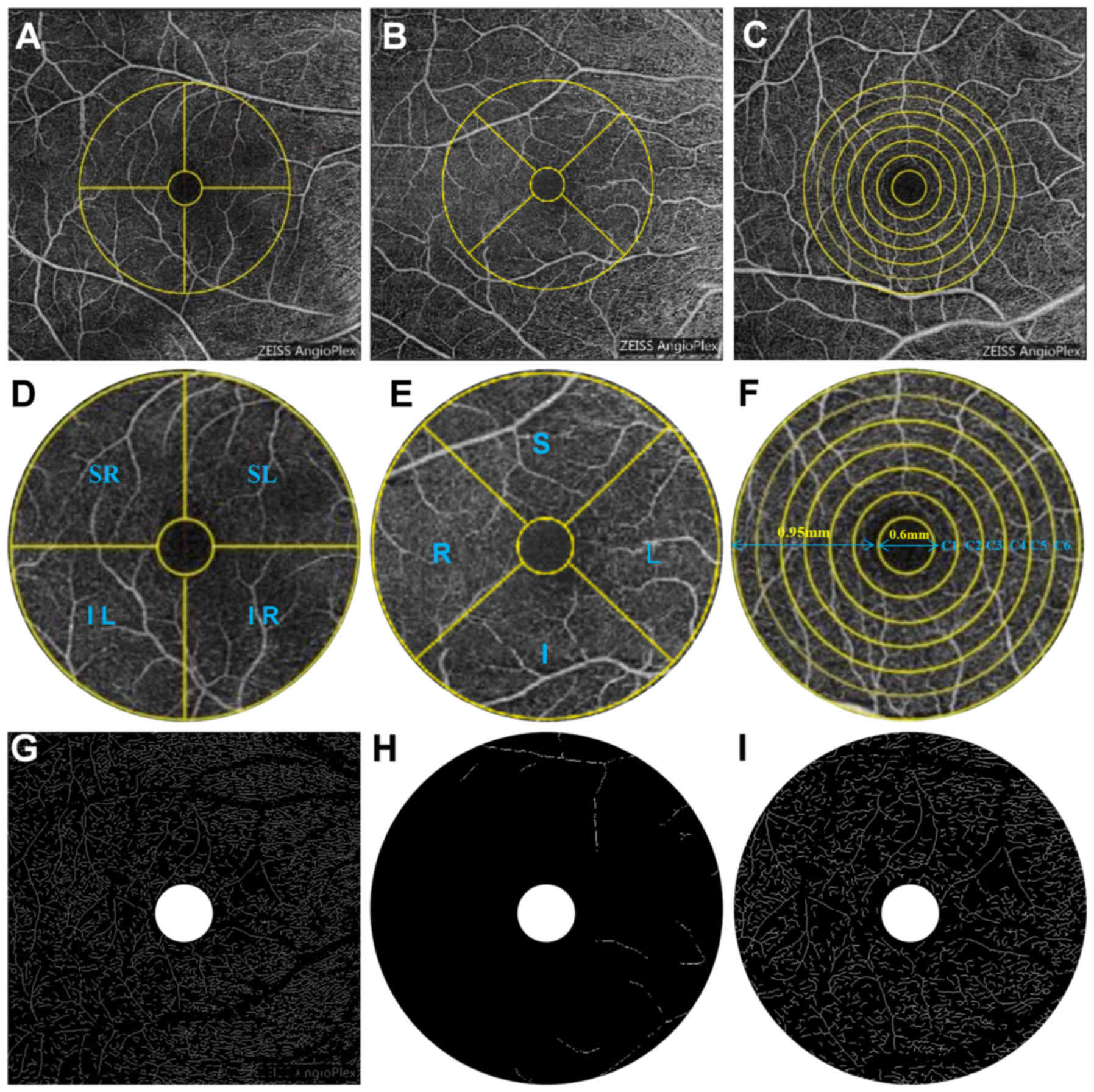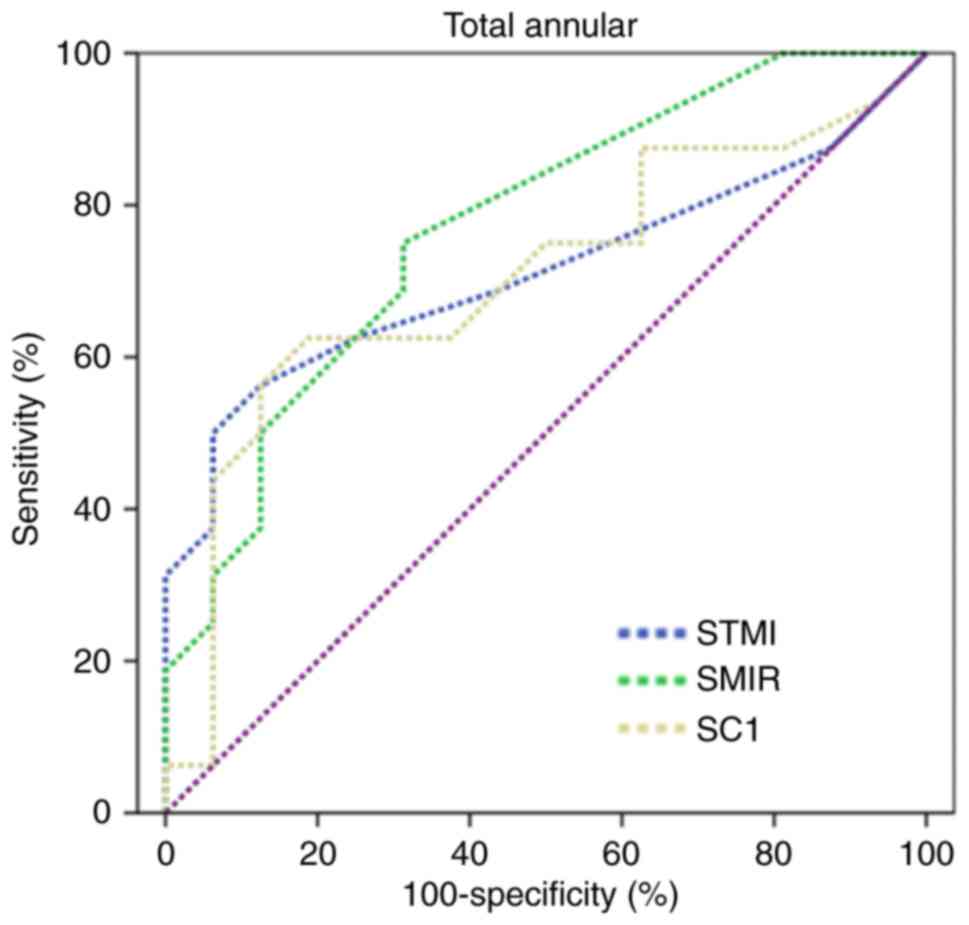|
1
|
Kang S, Park YG, Kim JR, Seifert E,
Theisen-Kunde D, Brinkmann R and Roh YJ: Selective retina therapy
in patients with chronic central serous chorioretinopathy: A pilot
study. Medicine (Baltimore). 95:e25242016. View Article : Google Scholar : PubMed/NCBI
|
|
2
|
Guyer DR, Yannuzzi LA, Slakter JS,
Sorenson JA, Ho A and Orlock D: Digital indocyanine green
videoangiography of central serous chorioretinopathy. Arch
Ophthalmol. 112:1057–1062. 1994. View Article : Google Scholar : PubMed/NCBI
|
|
3
|
Klatt C, Saeger M, Oppermann T, Pörksen E,
Treumer F, Hillenkamp J, Fritzer E, Brinkmann R, Birngruber R and
Roider J: Selective retina therapy for acute central serous
chorioretinopathy. Br J Ophthalmol. 95:83–88. 2011. View Article : Google Scholar : PubMed/NCBI
|
|
4
|
Adhi M and Duker JS: Optical coherence
tomography-current and future applications. Curr Opin Ophthalmol.
24:213–221. 2013. View Article : Google Scholar : PubMed/NCBI
|
|
5
|
Miwa Y, Murakami T, Suzuma K, Uji A,
Yoshitake S, Fujimoto M, Yoshitake T, Tamura Y and Yoshimura N:
Relationship between functional and structural changes in diabetic
vessels in optical coherence tomography angiography. Sci Rep.
6:290642016. View Article : Google Scholar : PubMed/NCBI
|
|
6
|
Spaide RF, Klancnik JM Jr and Cooney MJ:
Retinal vascular layers imaged by fluorescein angiography and
optical coherence tomography angiography. JAMA Ophthalmol.
133:45–50. 2015. View Article : Google Scholar : PubMed/NCBI
|
|
7
|
Kraus MF, Potsaid B, Mayer MA, Bock R,
Baumann B, Liu JJ, Hornegger J and Fujimoto JG: Motion correction
in optical coherence tomography volumes on a per A-scan basis using
orthogonal scan patterns. Biomed Opt Expr. 3:1182–1199. 2012.
View Article : Google Scholar
|
|
8
|
Jia Y, Tan O, Tokayer J, Potsaid B, Wang
Y, Liu JJ, Kraus MF, Subhash H, Fujimoto JG, Hornegger J and Huang
D: Split-spectrum amplitude decorrelation angiography with optical
coherence tomography. Opt Express. 20:4710–4725. 2012. View Article : Google Scholar : PubMed/NCBI
|
|
9
|
Wang M, Munch IC, Hasler PW, Prünte C and
Larsen M: Central serous chorioretinopathy. Acta Ophthalmol.
86:126–145. 2008. View Article : Google Scholar : PubMed/NCBI
|
|
10
|
Kishi S, Yoshida O, Matsuoka R and Kojima
Y: Serous retinal detachment in patients under systemic
corticosteroid treatment. Japanese J ophthalmol. 45:640–647. 2001.
View Article : Google Scholar
|
|
11
|
Prunte C and Flammer J: Choroidal
capillary and venous congestion in central serous
chorioretinopathy. Am J Ophthalmol. 121:26–34. 1996. View Article : Google Scholar : PubMed/NCBI
|
|
12
|
Piccolino FC and Borgia L: Central serous
chorioretinopathy and indocyanine green angiography. Retina.
14:231–242. 1994. View Article : Google Scholar : PubMed/NCBI
|
|
13
|
Caccavale A, Romanazzi F, Imparato M,
Negri A, Morano A and Ferentini F: Central serous
chorioretinopathy: A pathogenetic model. Clin Ophthalmol.
5:239–243. 2011. View Article : Google Scholar : PubMed/NCBI
|
|
14
|
Cunha-Vaz J, Bernardes R and Lobo C:
Blood-retinal barrier. Eur J Ophthalmol. 21:S3–S9. 2011. View Article : Google Scholar : PubMed/NCBI
|
|
15
|
Montero JA and Ruiz-Moreno JM: Optical
coherence tomography characterisation of idiopathic central serous
chorioretinopathy. Br J Ophthalmol. 89:562–564. 2005. View Article : Google Scholar : PubMed/NCBI
|
|
16
|
Daruich A, Matet A and Behar-Cohen F:
Central serous chorioretinopathy. Dev Ophthalmol. 58:27–38. 2017.
View Article : Google Scholar : PubMed/NCBI
|
|
17
|
Chalam KV and Sambhav K: Optical coherence
tomography angiography in retinal diseases. J Ophthalmic Vis Res.
11:84–92. 2016. View Article : Google Scholar : PubMed/NCBI
|
|
18
|
Bonini Filho MA, de Carlo TE, Ferrara D,
Adhi M, Baumal CR, Witkin AJ, Reichel E, Duker JS and Waheed NK:
Association of choroidal neovascularization and central serous
chorioretinopathy with optical coherence tomography angiography.
JAMA Ophthalmol. 133:899–906. 2015. View Article : Google Scholar : PubMed/NCBI
|
|
19
|
Bousquet E, Bonnin S, Mrejen S, Krivosic
V, Tadayoni R and Gaudric A: Optical coherence tomography
angiography of flat irregular pigment epithelium detachment in
central serous chorioretinopathy. Retina. 2017. View Article : Google Scholar : PubMed/NCBI
|
|
20
|
de Carlo TE, Rosenblatt A, Goldstein M,
Baumal CR, Loewenstein A and Duker JS: Vascularization of irregular
retinal pigment epithelial detachments in chronic central serous
chorioretinopathy evaluated with OCT angiography. Ophthalmic Surg
Lasers Imaging Retina. 47:128–133. 2016. View Article : Google Scholar : PubMed/NCBI
|
|
21
|
Sonoda S, Sakamoto T, Kuroiwa N, Arimura
N, Kawano H, Yoshihara N, Yamashita T, Uchino E, Kinoshita T and
Mitamura Y: Structural changes of inner and outer choroid in
central serous chorioretinopathy determined by optical coherence
tomography. PLoS One. 11:e01571902016. View Article : Google Scholar : PubMed/NCBI
|
|
22
|
Feucht N, Maier M, Lohmann CP and Reznicek
L: OCT angiography findings in acute central serous
chorioretinopathy. Ophthalmic Surg Laser Imaging Retina.
47:322–327. 2016. View Article : Google Scholar
|
|
23
|
Oztas Z, Akkin C, Ismayilova N, Nalcaci S
and Afrashi F: The importance of the peripheral retina in patients
with central serous chorioretinopathy. Retina. 2017. View Article : Google Scholar : PubMed/NCBI
|













